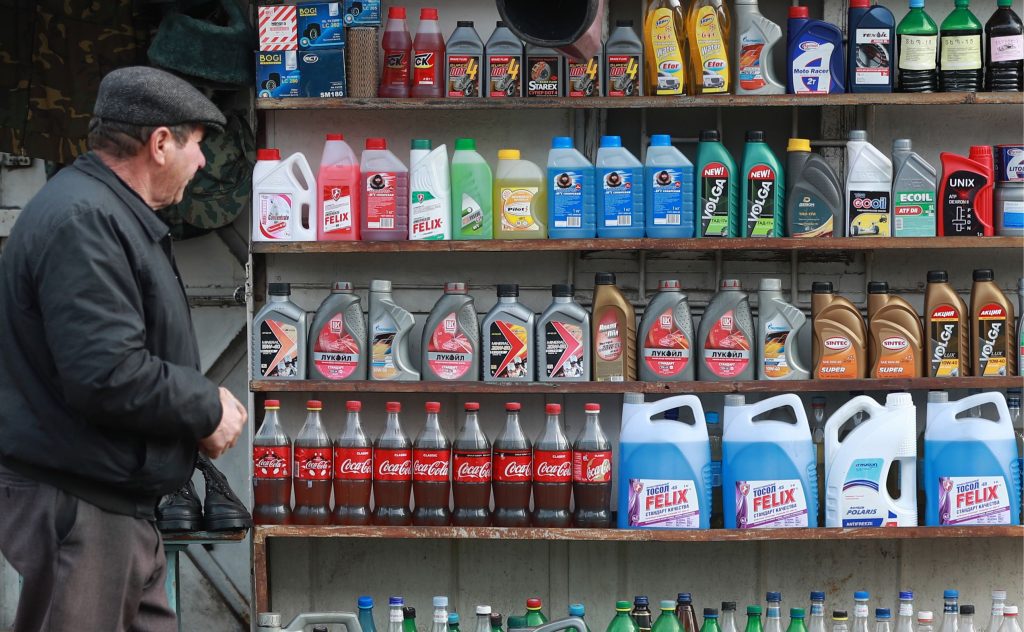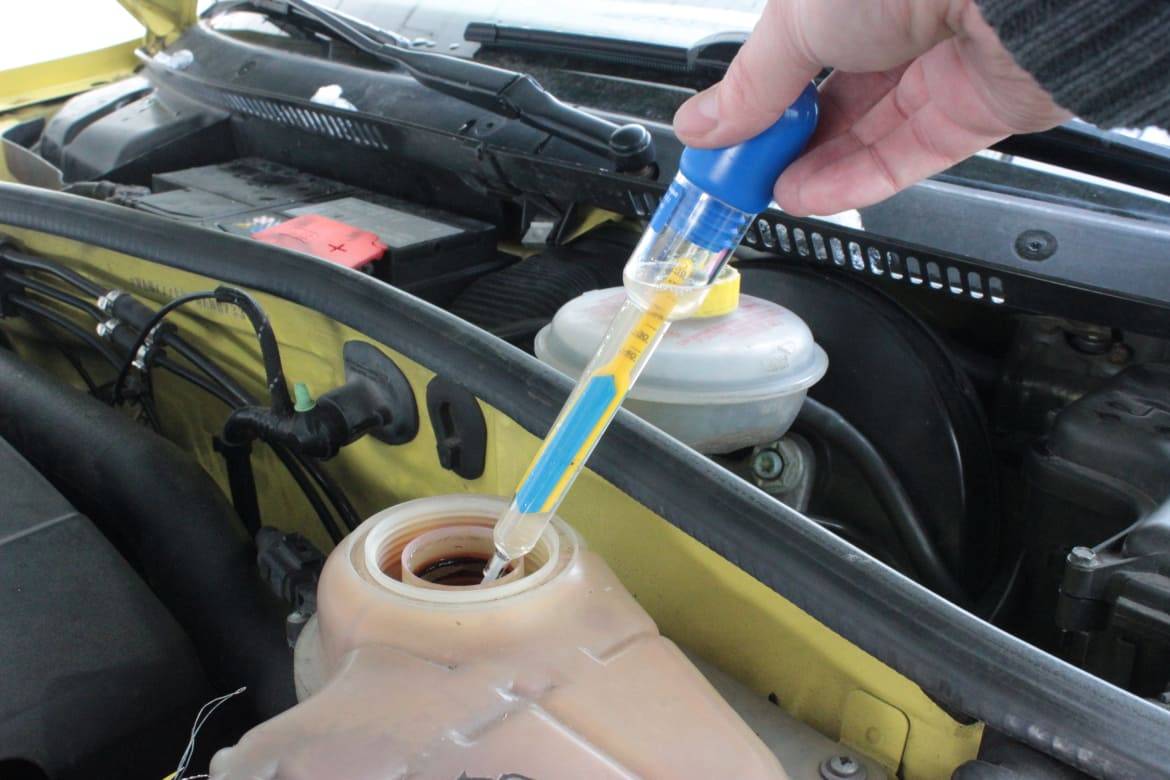The answer is yes and no. Antifreeze is frequently used as one of the components of a coolant mixture, typically a 50-50 mix of antifreeze and water, some rust-inhibiting agents can be added. Coolant can also be called antifreeze sometimes. It lubricates the moving parts it comes into contact with, which protects damage to the water pump, head gasket, cylinder, and piston timing.
Contents
Why Does Engine Need Coolant?
You already know how the engine works: by burning fuel, internal combustion engines generate energy. A portion of this energy is captured by the engine and used to move the vehicle forward. The remainder of the energy is converted to heat.
A part of this heat escapes from the engine via the exhaust. The rest is contained within the engine block itself. The average combustion temperatures are close to 2,000°F (1093°C) and can reach as high as 4,500°F (2482°C) in some cases. This heat can melt engine components if left unattended, that is why we need coolant.
Coolant transfers heat and adds antifreeze protection to an engine, allowing your vehicle to run at peak performance. A right mix of coolant will not freeze at low temperatures nor boil at high temperatures. It prevents corrosion and rust of metal parts in the cooling circuit and engine, and wear of non-metallic parts, like rubber and plastic parts.
How Does Coolant Go Around?
The thermostat will open when the engine reaches operating temperature, and the water pump will circulate coolant throughout the system. After the coolant has absorbed the heat, it will proceed to the radiator to be cooled. When the vehicle is not moving fast enough to move the air, a fan will pull in air through the radiator to help cool the liquid down. After that, it will exit the radiator once it has cooled down and begin the process all over again.
SEE MORE:
Type Of Coolants

There are different types of coolants, and not all of them are suitable for your car. Always check the manufacturer’s specifications in your vehicle’s owner’s manual to see what type of coolant your vehicle requires. The wrong product can lead to poor performance or engine failure.
There are 3 main types of coolants:
Inorganic Acid Technology Coolant (IAT)
Inorganic acid technology coolant is the conventional coolant that was used on older vehicles because it works better with the metals used in older engines (steel and iron). It must be changed every two years or 24,000 miles/38624 km, making it far inferior to newer formulations, thus increasing the maintenance and ownership cost. On the other hand, IAT is better at limiting corrosion than OAT. This coolant is available in two colors: green and yellow.
Organic Acid Technology Coolant (OAT)
OAT is used in newer car models because it works better with the metals used in newer engines (aluminum). It has a longer lifespan than IAT (about 3-5 years, or 150,000 miles/241401 km). Nevertheless, its corrosion resistance ability is not as good as IAT, that is why the manufacturers use additives in their coolant. There are numerous additives available: nitrite, phosphate, silicate, etc. To maximize corrosion protection in specific engines, each coolant has its own blend of additives, so you must read the owner’s manual to know what type of coolant blend your car needs. They are available in several different colors, ranging from dark green and orange, to pink and blue.
Hybrid Organic Acid Technology Coolant (HOAT)
Hybrid organic acid technology coolant is a hybrid of IAT and OAT coolants. HOAT is a popular coolant used in a majority of new vehicles. It has the corrosion resistance of IAT and the long life of OAT. And just like OAT, it has additives, which means not all HOAT coolants are similar, but they have different chemical formulas. Again, you have to read the owner’s manual and get advice from mechanics or professionals to know what type is OK to be used in your car’s system.
Each engine has a unique mix of metals and gasket materials. Some engines, for example, have more aluminum parts than iron parts. Some gaskets contain metal, while others do not. When deciding which coolant is best for a specific engine, automotive OEMs take all of these factors into account. Each additive is intended to protect specific metals. So, in order to prevent corrosion and other problems, you should use the proper additive blend in your coolant. Using the wrong coolant can cause component damage and corrosion, which can have a long-term negative impact on a vehicle. The effects can be latent, which means that it can take up to a year before plugging, deposits, and corrosion damage cause a problem.
How Often Should You Flush The Coolant?
The coolant needs to be flushed because the products deteriorate after repeated use and do not withstand freezing and boiling as well as they should. Because engines have many rust-prone parts, the coolant picks up the rust during the circulation process and deposits it in another part of the vehicle. However, particles can accumulate in the coolant over time, causing it to perform poorly.
The average time between flushes depends on the types of vehicles and coolant. OAT and HOAT coolant can last a long time nowadays. Nonetheless, that does not mean you should wait until the exact time manufacturers give you. They recommend coolant replacement intervals based on “normal” circumstances, but so many vehicles operate in extreme conditions from time to time. So it’s always smart to play it safe and replace your coolant a little sooner than the recommended interval.
What Can Be The Alternative?
The main role of coolant in a car is to carry the heat from the engine away. Consider that alone, pure water actually is the best coolant and has more heat-carrying ability than pure ethylene glycol. People did use water back in the day when there was no coolant yet. Of course, there are reasons that it is replaced by coolant now.
Unlike coolant which also helps reduce corrosion and engine rust, water forms rust on iron engine parts. The rust is then carried off to other cooling areas. The resulting corrosion interferes with heat transfer even before the build-up plugs the radiator and fills the cooling system with sediment. Not only that, in low temperatures, water will freeze and expand, increasing the pressure and cracking the engine.
Conclusion
While choosing coolant for your car, besides reading the owner’s manual, you should avoid the generic “all makes, all models, all colors” coolant. It is likely that these coolants do not have any good additives but instead rely on acid salt molecule coating and/or proprietary “universal” additives that provide little to no protection. To know more about taking care of your beloved car, how about paying a visit to Maintenance Tips to see if there is any useful information like this?



